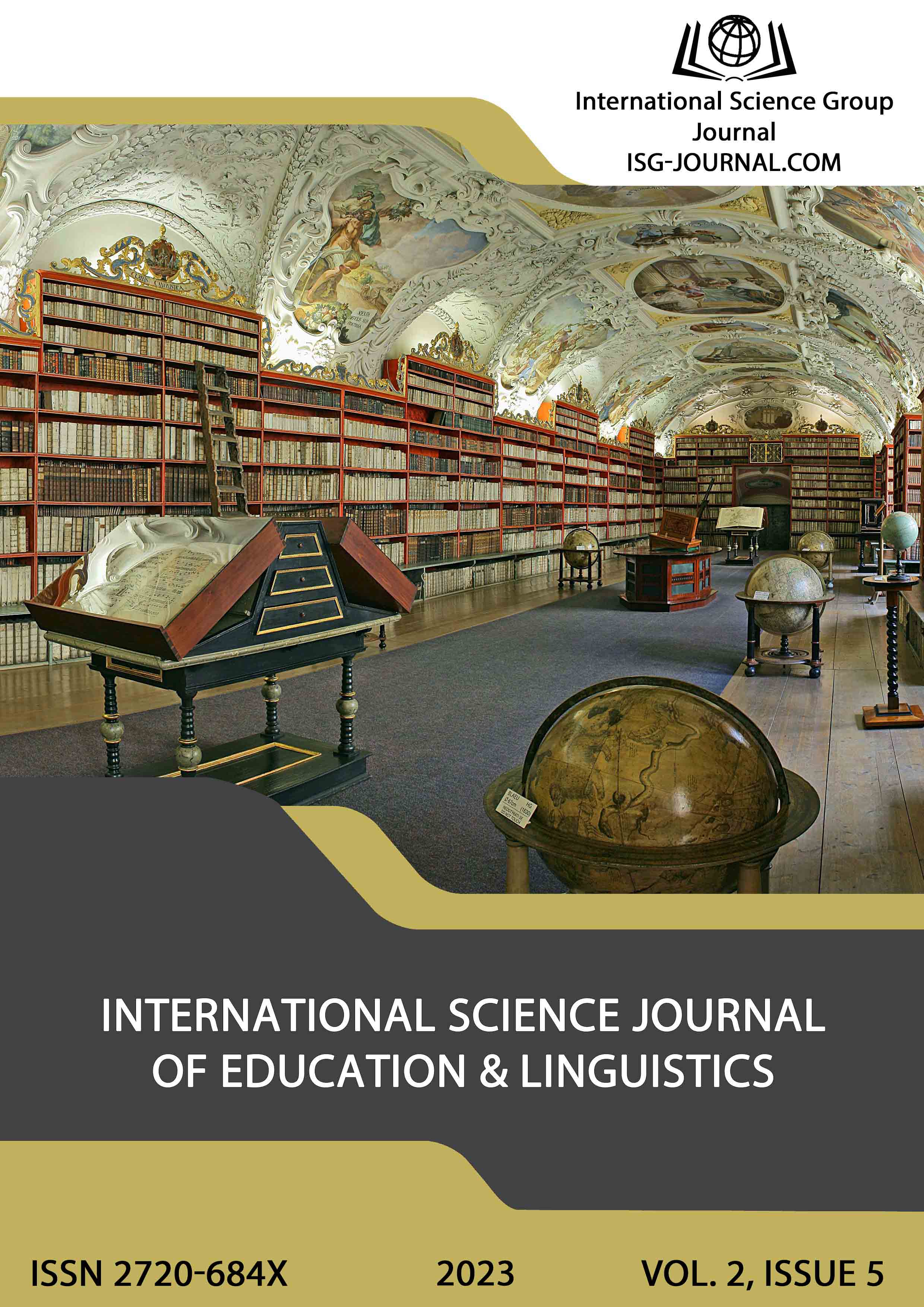Speech Act Theories in the ХХІ century
DOI:
https://doi.org/10.46299/j.isjel.20230205.02Keywords:
discourse, speech act, perlocutionary act, illocutionary act, implicatures of communication, communicative situation, speech behaviorAbstract
Based on the principle that any object-system is always a part of the more extensive object and performs a certain function in it. A human language is considered an integral part of social systems, which are, at the same time, a type of more general class of self-managed systems. The functional node, in which the phenomenon of language occurs in such systems, is a communicative subsystem (communicative situation), i.e., the area where the information is transferred from one member of the self-managed system to another. Constant mutual information is an essential condition for their successful cooperation, and coordination of efforts in the joint performance of a certain integral function of the self-managed system within the limits of a more general natural system. Language aims at information flows in communicative subsystems of self-managed systems, therefore it depends directly on the characteristics of these flows. An increase in the amount of information occurred in the development process of society's communication system and caused the formation of specialized information spheres that allow us to cope with a large volume and variety of information coming from the outside. This leads to the formation of different functional varieties of language, styles, which are a form of adaptation of speech behavior to different conditions.References
Бодуэн де Куртенэ И.А. (1963) Избранные труды по языкознанию. Москва.: Изд-во Акад. Наук СССР.
Звегинцев В.А.(1996) Мысли о лингвистике. Москва.
Кузнецов И.Н. (1998) Научные работы: Методика подготовки и оформления. Минск.: Амалфея.
Searle J.R. (1976) Speech Acts: An Essay in the Philosophy of Language. Cambridge: Cambridge Univ. Press.
Leech G. (1983) Principles of Pragmatics. London and New York: Longman.
Сусов И.П. (1980). Предложение и действительность. Коммуникативно-прагматические и семантические функции речевых единств. – Калинин: Калиниск. гос. ун-т., 11-25.
Грайс Г.П. (1985). Логика и речевое общение. Москва: Прогресс, 1985.
Austin J.L. (1981). How to Do Things With Words. Harvard: University Press.
Почепцов Г.Г. (2001). Теория коммуникации. Киев: “Ваклер”.
Почепцов Г.Г. (1980). Слушатель и его роль в актах речевого общения. Калинин.
Auwera, J., & Plungian V.A. (2009). Modality's semantic map. New York: Walter de Gruyter.
van der Auwera. (1976). On the Meaning of the Basic Speech Acts ?? Journal of Pragmatics., 253 – 264.
Verschueren, J., Östman, J.A., Blommaert, J., & Bulcaen, C. (Eds.). (2001). Handbook of Pragmatics. Amsterdam & Philadelphia: John Benjamins.
Verschueren J. (1976). On Speech Acts Verbs. - Amsterdam.
Богданов В.В. (1989). Класификация речевых актов. Калинин.
Downloads
Published
How to Cite
Issue
Section
License
Copyright (c) 2023 Iryna Semeniuk Zumrutdal

This work is licensed under a Creative Commons Attribution 4.0 International License.





